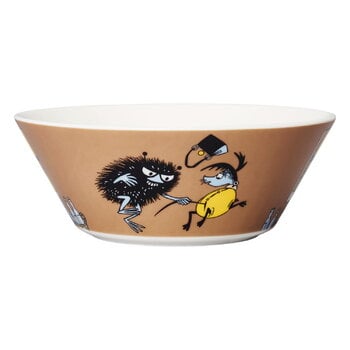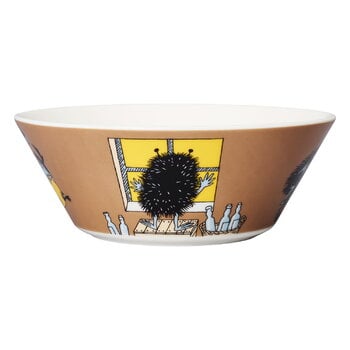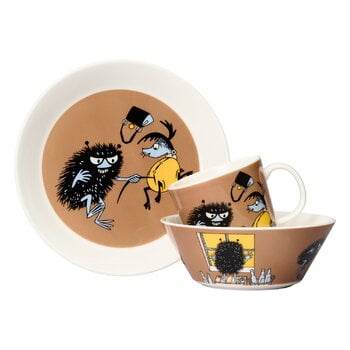The Stinky in Action bowl from Arabia’s Moomin collection features an illustration of Moominvalley’s resident menace, Stinky. However, this time his actions are surprisingly noble: he is trying to save Moominmamma’s purse from the paws of a thieving hound. Although stealing is one of Stinky’s favourite pastimes, even he knows not to touch Moominmamma's handbag.
The mugs, bowls and plates of Arabia’s Moomin Classics tableware collection illustrate the characters of Moominvalley. The first pieces of Arabia’s Moomin tableware came out already in the 1950s, and their large-scale production began in 1990. All the illustrations are done by Tove Slotte who draws inspiration from the original drawings by Tove Jansson. The form of the collection comes from Arabia’s timeless ceramic Teema tableware designed by Kaj Franck.









